Let us walk through the lanes where the artisans of Kashmir are trying to keep Namda Art dying art form alive.
Whenever we look around the beautiful rugs, carpets, and felt wall pieces, every piece is a unique masterpiece. So different from one another but so similar in terms of technique, art, and craftsmanship. Every Artisan proudly bears their art on display in local shops and art fairs. But what happens when we look around, ask for the price and either negotiate. Or leave them hanging by saying it’s too expensive, or we might stop by later?
Months and Years of Hard work these artisans put in their work have to see drastic price reductions. To get one of their pieces sold. What worse could happen, right? Not only do they have to sell their artwork for a lot less in return for a considerable loss. But some of these artisans can not make a living out of these artworks. They have to stop making or practicing them eventually. To find other jobs that can help them earn the bread.
Behind the Scenes of Namda Crafts
It gets difficult to be running a business that involves selling Authentic Kashmiri Rugs for a living. This is precisely what is happening with the Kashmiri Craft of Namda Felt Art. We are convinced that an artisan gets a hefty amount for even a single rug they sell. Unfortunately, Namda As an Art form requires a lot of Raw Material that has become expensive today. A lot of time and labor goes into making it, the age-old traditional and handmade cultural technique. No machine can achieve and give you the original Namda Felt Art Experience.
Let us get to the harsh reality as we talk about the Namda Craft of Kashmir. That goes into sustaining and preserving this dying Art form today.
What is the Namda Craft of Kashmir so famous for and what is the technique behind its making?
Kashmiri Textiles are made using weaving, hand-knotting, and back-to-back sewing techniques. The Textiles are used for making either Rugs, Carpets. Even for other Home Decor Items or for harsh winters of Kashmir that require hot woolen clothing. Namda Craft is one such Kashmiri Craft specifically known for Making Carpets and Rugs. Instead of using the techniques mentioned above, Namda Craft uses Felting to create beautiful carpets. Wool in large quantities is felted instead of weaved. Later colorful threads and zari embroidery are used to create vivid patterns and designs. Namda Artisans have been making these carpets since the 11th Century when Emperor Akbar ordered the artisans to make them for his horse, who couldn’t bear the region’s extreme cold.
The Multiple stages of making Namda Felt Art:
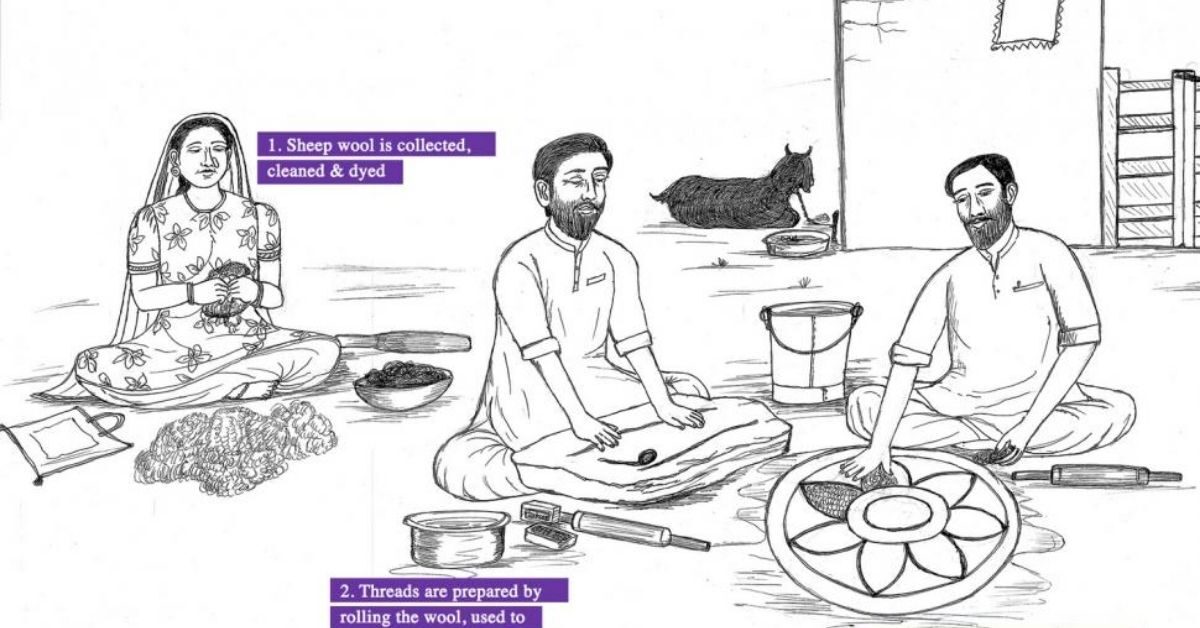
- Pure Sheep Wool is used and felted instead of weaving it.
- Many layers of sheep wool are layered upon each other and pressed using a special tool and water.
- Since this craft is handed down from one generation to another, people outside of artisan families cannot practice the art of Namda as it is a well-kept secret.
- The Carpet is then dried in the sun.
- Aari work is a traditional felt embroidery used on the Namda Craft.
Different Types of Namda Craft:
- Plain Namda: this type of namda craft has absolutely no embellishments or embroidery and is completely plain.
- Embroidered Namda: using Aari work and various coloured threads the namda craft is beautified.
- Cutwork Namda: small shaped pieces of wool layers are cut and placed one over the other while layering to achieve the desired results later.
Why is Namda Craft a dying art form today irrespective of being such an important aspect?
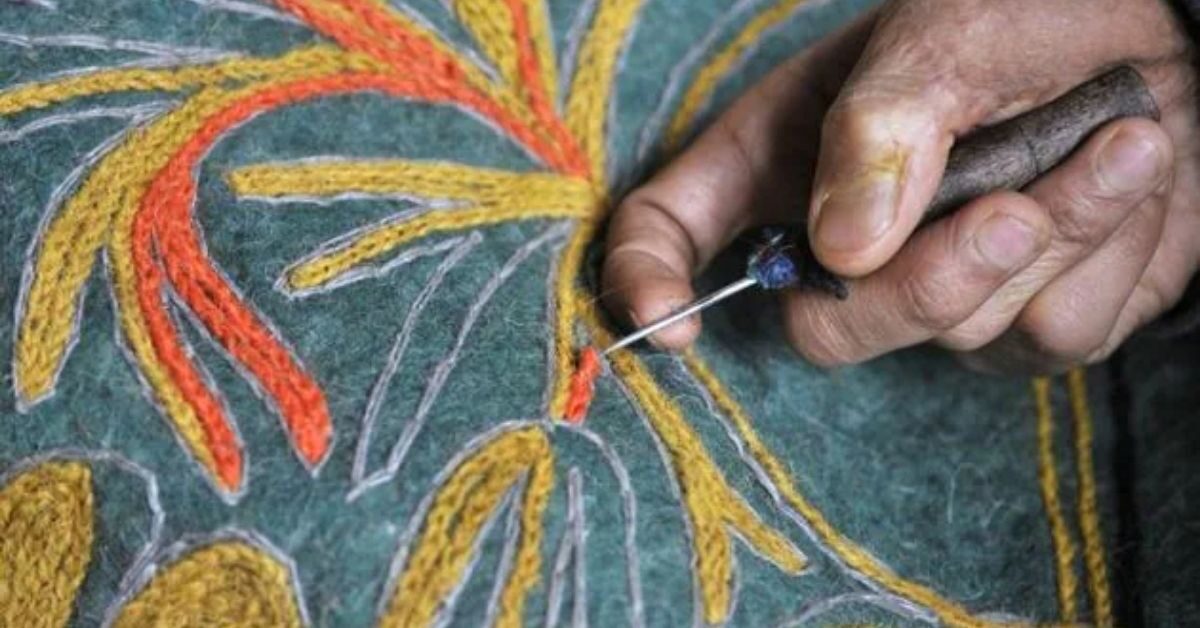
The Raw Material and Resources. The problem today begins with the very core of the art form to be practiced. Pure Sheep wool today is a costly commodity, and also, the machinery used for certain aspects of making the Namda Craft is not readily available for most of the artisans. As we saw earlier since the Namda craft is passed down from one generation to another, this very guarded secret results in fewer families practicing the art form. Also, as the artisans can not provide for their families merely on what they earn out of the craft, they have had no option but to move onto different sources of income, leaving their family heritage behind. Apart from these reasons, modern marketing is something that these artisans are not very aware of. Most of the time, their artwork does not get the exposure it deserves through traditional marketing efforts.
Our Ray of Hope: Organisations and Government Efforts that are helping in Reviving the Dying Art of Namda Craft:
The Union Ministry of State for Skill Development launched a pilot project on 27 November 2021 that has served as a boon for Namda Artisans. Under this project, the ministry announced a carpet export project that could boost the carpet artisans’ business from 600 crores to 6,000 crores. This pilot project alone is aimed to benefit about 2,250 artisans and 30 clusters of Namda Craft practitioners from 6 districts of Kashmir.
Ministry of Skills Development has also designed a short-term training course to keep this endangered art form alive.
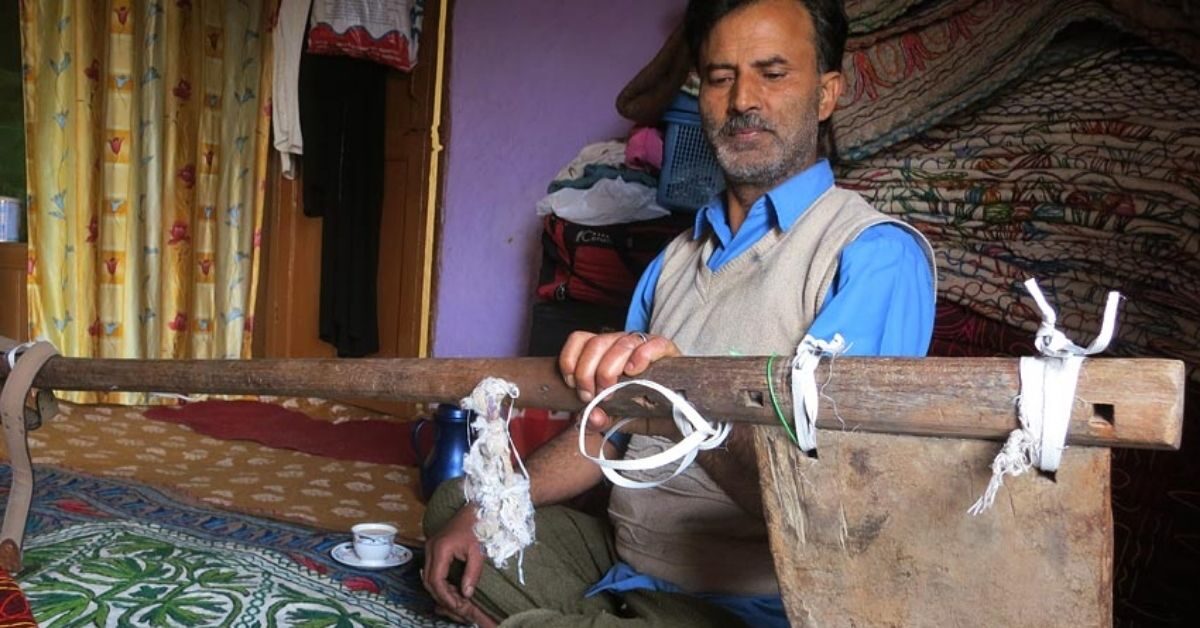
Meet Fahrooq Ahmed Khan:
Mr. Khan is the 3rd generation of his family who has been continuing the Art of Namda Craft for over 33 years. He refuses to pass what was passed down to him as a legacy and family heritage onto his successors or future family. Why? Because the craft requires a lot more to be put into it and reaps a lot less in return. Mr. Khan’s sorrow reflects in his story of how his 13 artisan team is now left with only him alone practicing and making the craft of Namda Carpets. However, all hope is not lost in him, and he believes the Government’s efforts and the acceptance of travelers and tourists towards buying this art form can save this art from being merely mentioned in pages of books in the future.
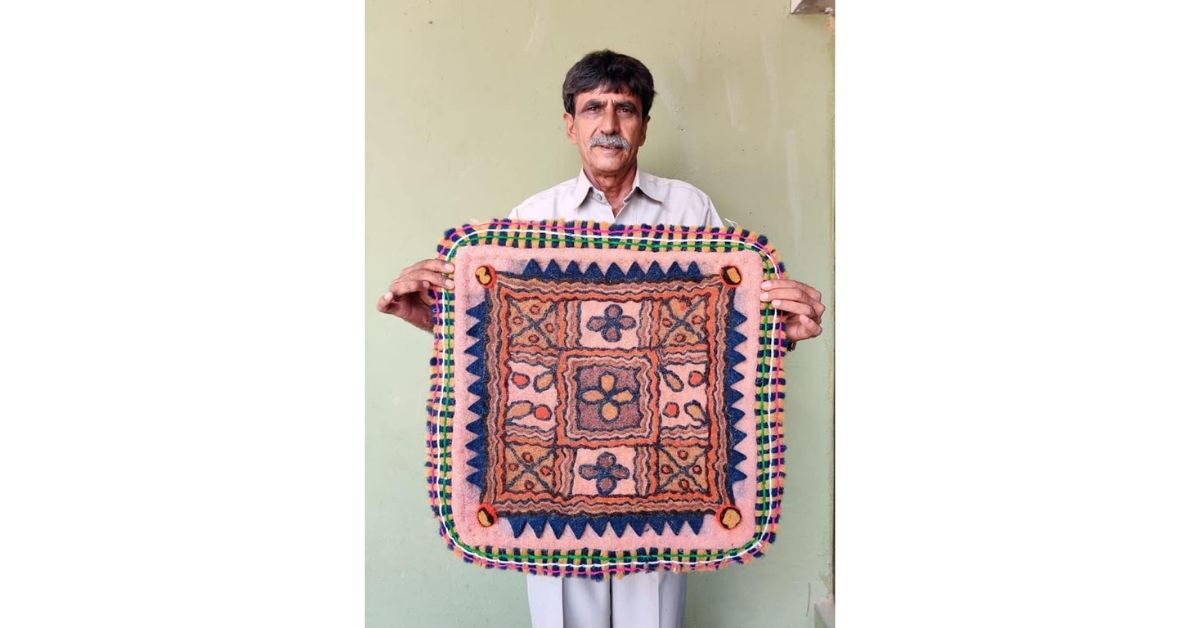
Today, many artisans look forward to reviving this art form with hope in their tired eyes and worn hands, waiting for the travel and tourism community to see their art for the effort that goes into it and for them not to justify what went into making it. He hopes you ‘felt’ the pain of this artisan community and would contribute by saving this art form in some or the other way. Cause you could contribute to saving someone’s familial legacy for a small sum of money. Someone’s heritage was passed onto them, and most importantly, give them hope to pass it onto the next generation knowing well that their art will be loved and taken care of.
Follow India Chalk on Instagram for more amazing travel content. You can share your travel story with us. Reach out to us on email at contact[at]ndiachalk[dot]com. This blog is curated by India Chalk and written by Megha Sapre.

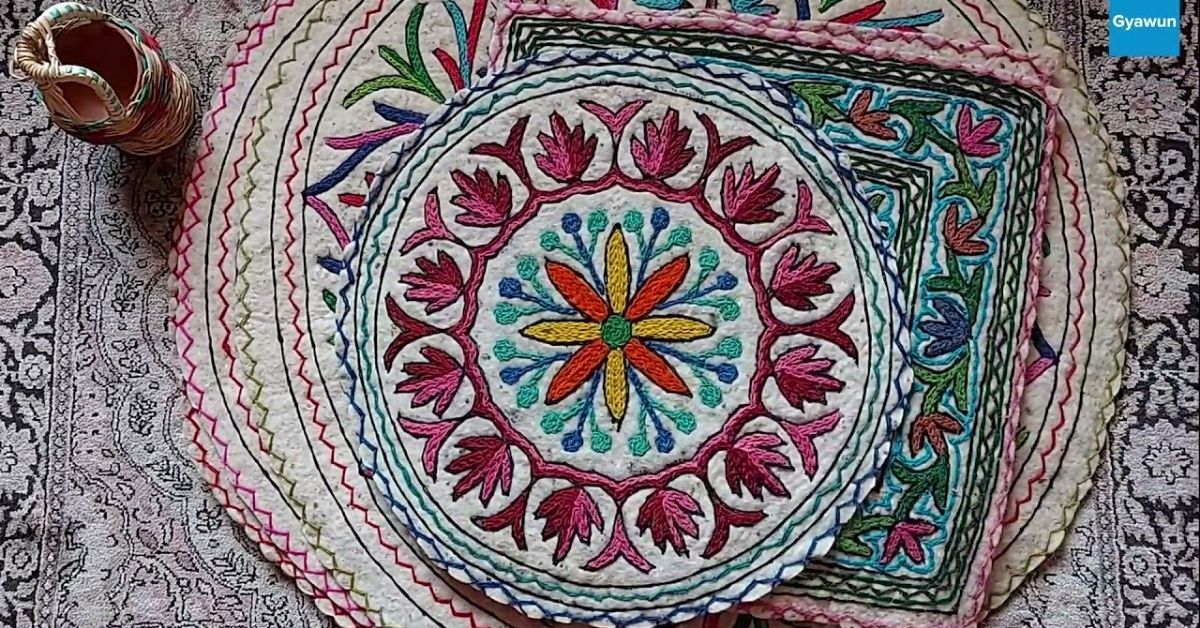





1 Comment